Vigilante at 65
31 August 1958 saw the first flight, with North American Aviation test pilot Richard Wenzel at the stick, of the No.1 prototype North American XA3J-1, eventually to be known as the A-5 Vigilante.
The big American carrier-based supersonic bomber was powered by a pair of General Electric J79-GE-2 turbojet engines each rated at 15,150 lbs trust with afterburning, and the program sped along with the Vigilante going supersonic for the first time just a week later on 5 September.
Some 76 feet long and with a 50-foot wingspan, the big bird had a maximum takeoff load of some 32 tons– nearly twice that of the B-25s that Jimmy Doolittle had to shoehorn onto the deck of the USS Hornet just 16 years before. Likewise, they could carry a much more capable bomb load much further, being dedicated to the strategic nuclear strike role and capable of air-to-air refueling.
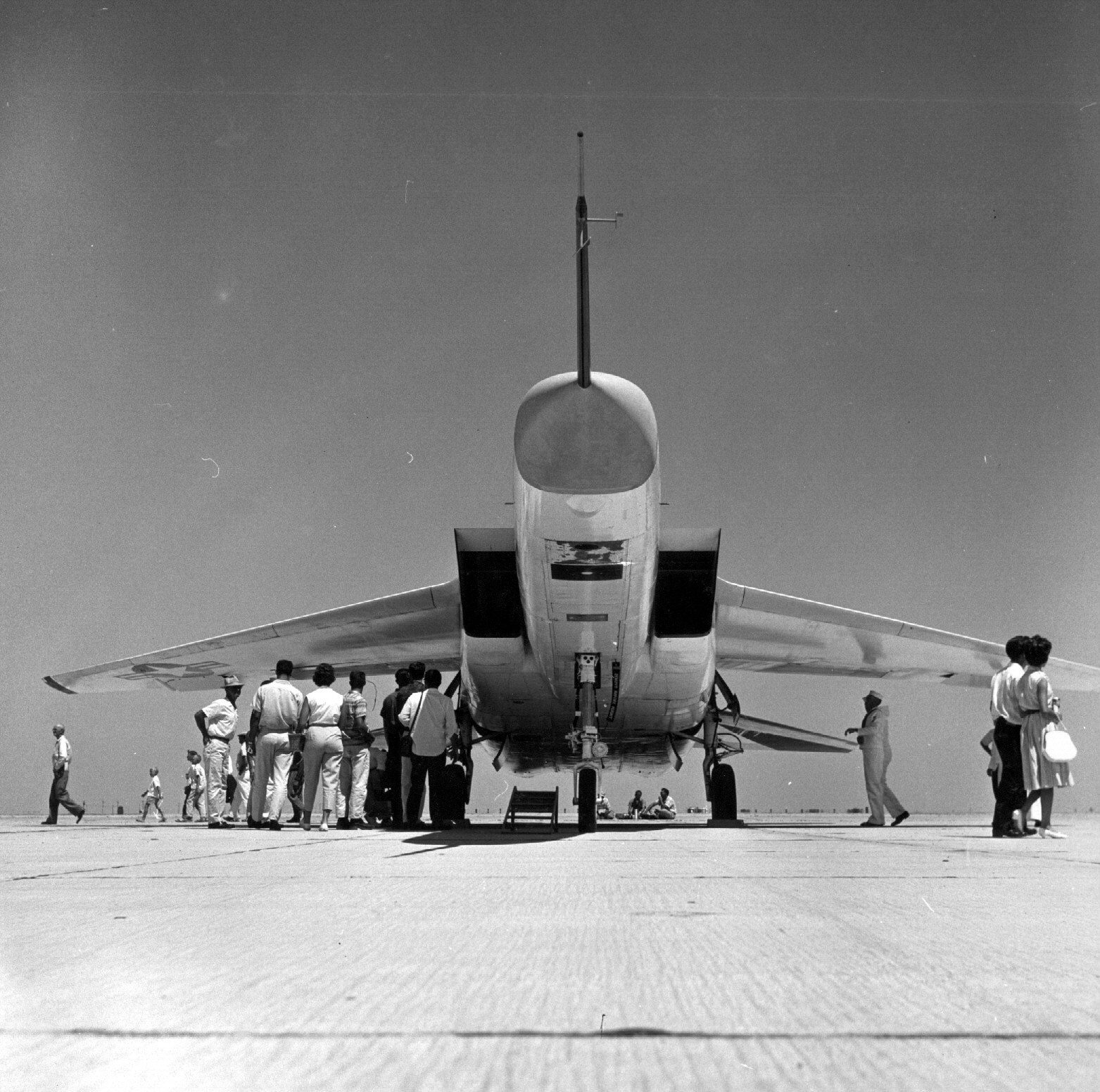
A3J-1 Vigilante pictured during an open house at an unidentified air station in 1961. Likely NAS Stanford where VAH-1 was set up
By 1960, the 6th Vigilante (4th production frame) completed carrier suitability tests by making 14 launches and landings on the USS Saratoga (CVA-60).
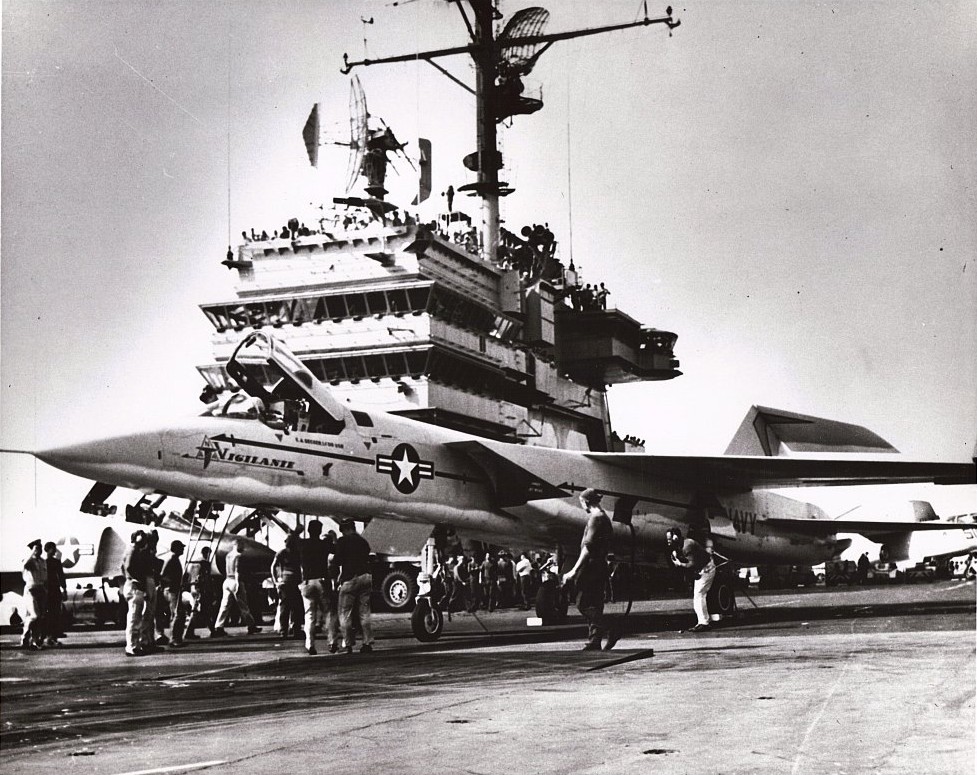
The 4th production North American A3J-1 Vigilante bomber (BuNo 146697) conducted the type’s initial carrier suitability tests aboard the aircraft carrier USS Saratoga (CVA-60) during the week of 25 July 1960. Piloted by NATC’s CDR Carl Cruse, LCDR Ed Decker, and LT Dick Wright, the Vigilante made 14 successful launches and arrested landings.
On December 13, 1960, an A3J-1 crewed by CDR Leroy Heath and LT Larry Monroe set a new altitude record of 91,450.8 feet– beating the previous record by over 4 miles. They did this with an operational 2,200-pound payload. The Vig was capable.
The first squadron, VAH-3, was set up in 1961 and the operational debut of the Vigilante was in August of 1962 when VAH-7 deployed aboard the USS Enterprise (CVAN-65) for a short cruise in the Mediterranean.
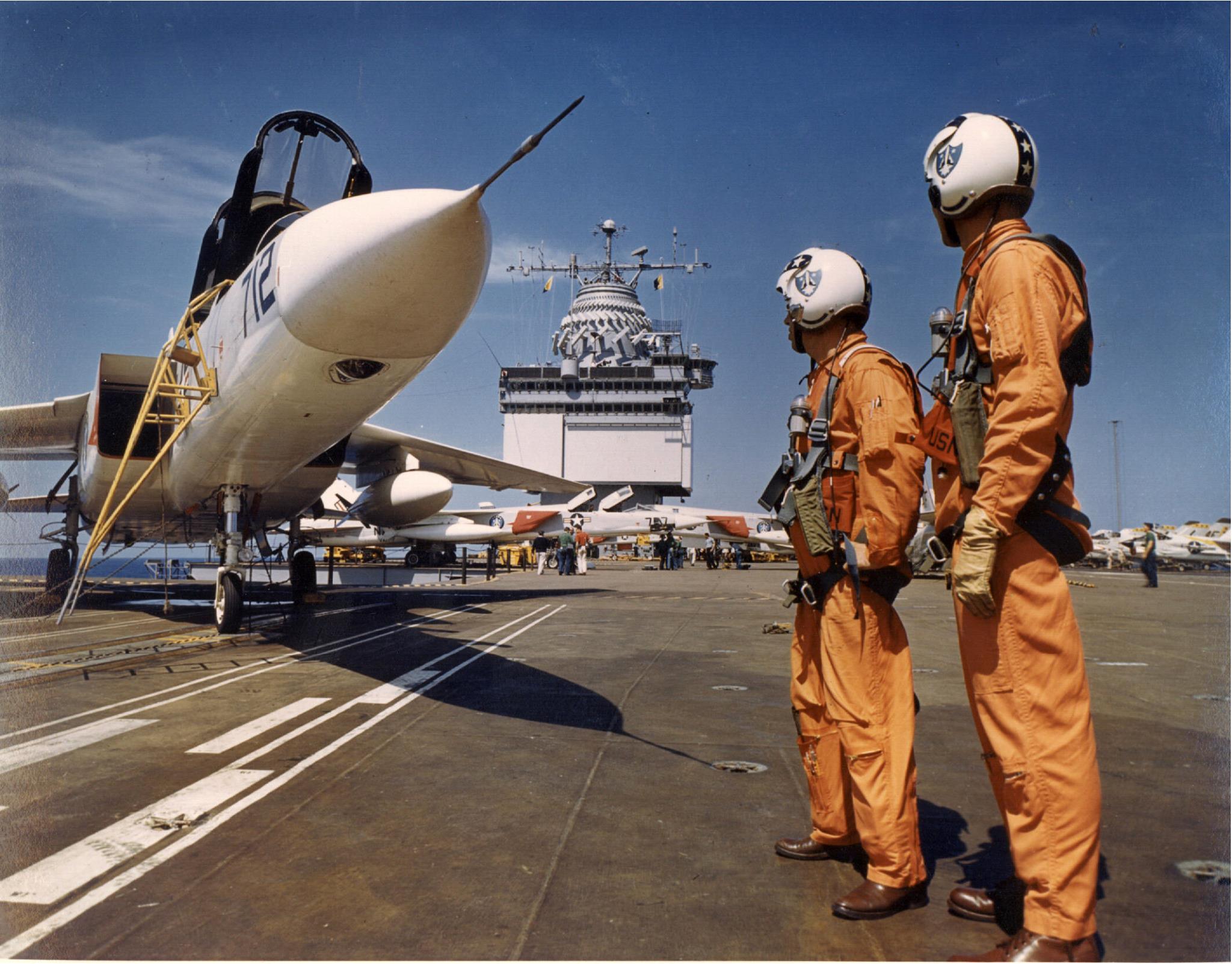
Heavy Attack Squadron (VAH) 7 “Peacemakers” aircrew pictured in front of an A-5A Vigilante on the flight deck of the aircraft carrier Enterprise (CVAN 65) on its first cruise, 1962, just four years after the type first flew– note the brown shoes
However, with the Navy wanting more nuclear eggs in one SSBN-shaped basket, they soon started converting the A-5 to the RA-5C recce bird, and 10 RAVH squadrons were ultimately established, with eight of those seeing service over Vietnam– and 18 Vigilante left there, numbers that qualified as decimation by the old Roman standard.
With air bosses wanting more room on their flight decks for sexy new F-14s, post Vietnam the Vigilante’s days were numbered.
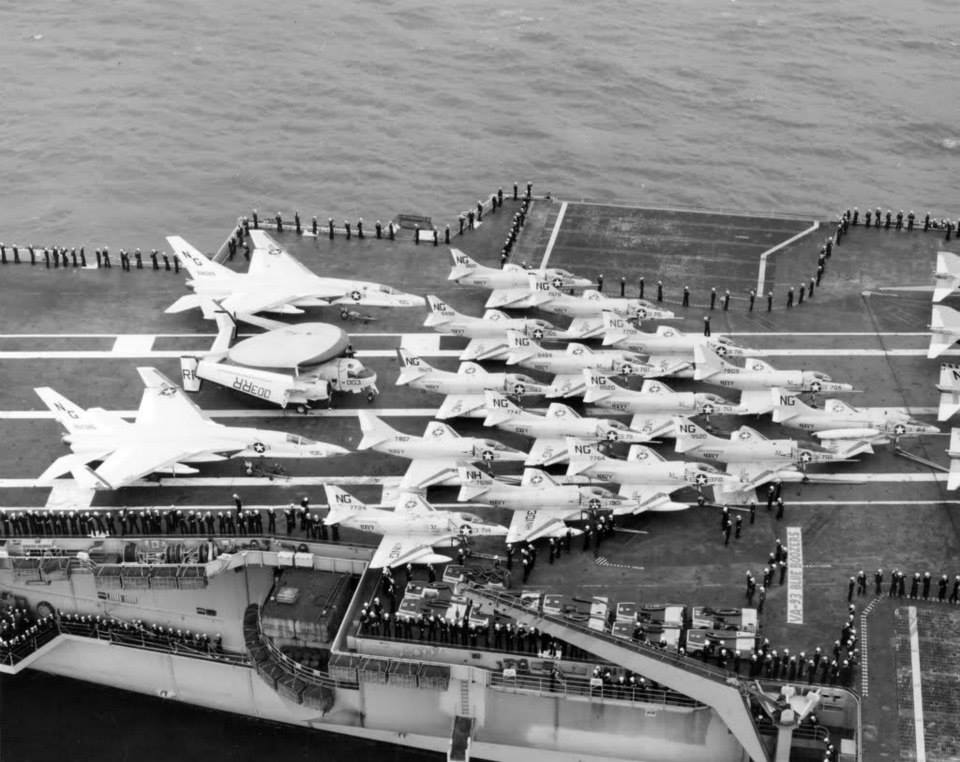
The size difference between the A-5 Vigilante and A-4 Skyhawk. She was a big bird that took up lots of space.
The last RA-5C squadron, RVAH-7, completed its final deployment to the Western Pacific aboard USS Ranger in late 1979 and the type was retired by the end of the year.
In all, just 170 Vigilantes of all variants would be produced, one of the shortest runs of U.S. carrier tactical aircraft in modern times. Compare this to 188 S-3 Vikings.
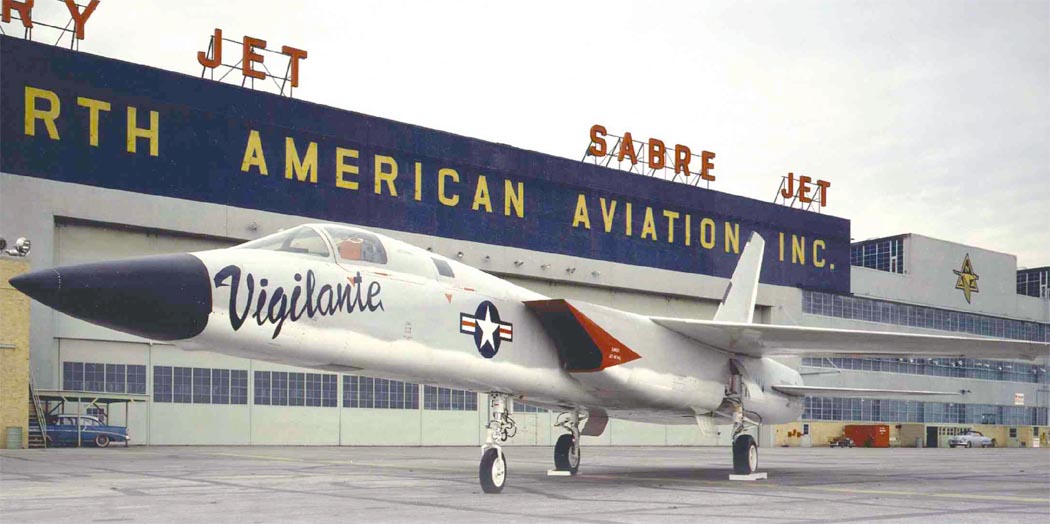

I love the photo of Big E with her original radar.
The Beehive!